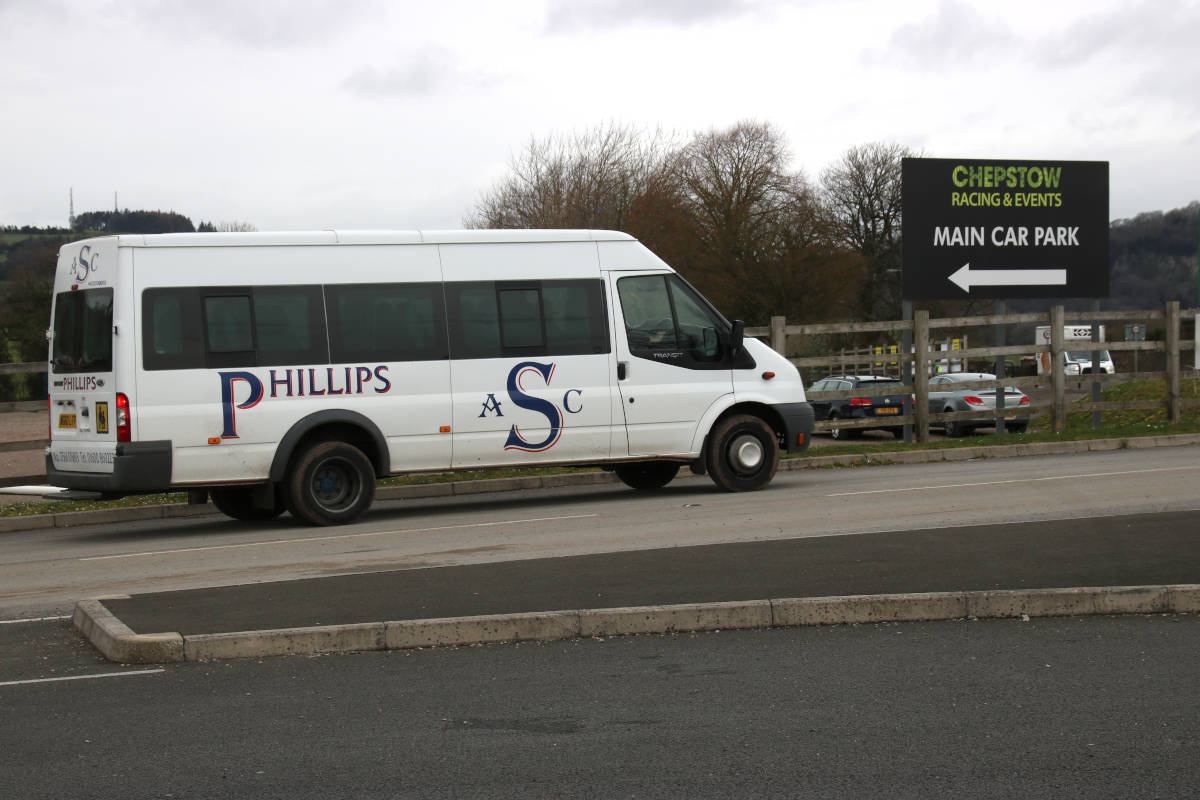
Open in New Window
Open in New Window
For reliable, comfortable professionally organised group travel services in Monmouthshire and surrounding areas, call ASC Phillips. Whatever size of group you need to move, they can be accommodated in modern, well equipped vehicles, driven by experienced, DBS checked drivers. The vehicles avaible are:
- Minibuses, 8-16 seat
- 36 Seat coach with luggage space
- 53 Seat executive coach with luggage space
- 70 Seat coach with luggage space

--Request Information-- --More Images Like This--Photo from Featured Project near Llandogo
Group travel arrangements are easy with ASC Phillips
From a single minibus to seat eight people, up to a huge party utilising any combination of 8, 12, 16, 37, 53 and 70 seat vehicles to make sure that everyone gets to the right place at the right time.
Group travel arrangements are easy with ASC Phillips
From a single minibus to seat eight people, up to a huge party utilising any combination of 8, 12, 16, 37, 53 and 70 seat vehicles to make sure that everyone gets to the right place at the right time.
Call us to talk over your group travel needs, or click in the header of any page to get a quote.
Littledean is one of the ancient villages of the Forest of Dean. Situated a mile east of the town of Cinderford, it contains many old buildings dating back to the 1600's, and some even earlier. Littledean Hall, no longer open to the public, is one of these ancient buildings, and it is reputed to be one of the most haunted houses in England, though this is stoutly denied by its current owner who is at pains to discourage the notion..
The Village of Littledean in the county of GloucestershireThe village was once the site of Roman occupation, and the remains of the Roman temple can be seen in the grounds of the Hall. Even earlier, the hillside to the east of the village was the site of an ancient encampment and the hillside still bears traces of the banks and ditches of the fortifications. Littledean grew up at the centre of a network of ancient Forest tracks (notably the Roman road which led up from the ford and ferry at Newnham). By 1086 a motte & bailey castle, known in later times as the Old castle of Dene, had been built on a hill to the east, in a commanding position above the village and the valley leading up from the Severn plain. Littledean gradually became a centre of local industry, especially iron making and associated metal trades.
Littledean's Church of St Ethlebert was built in the late 12th century with the tower added in the 14th century. Today this has a rather truncated appearance, because the tower originally had a spire which was destroyed in a severe gale in 1894 and never rebuilt. Other buildings of interest are the Red House an early building, possibly with a Norman Core, the Old Coaching Inn and Littledean Hall. Also known as Dean Hall, this is reputed to be the oldest known house in Gloucestershire. The present house is 16ht century in date, with an early17th century north wing and a mid 19th century top story. Within the grounds of Littledean Hall is a Roman temple, sited at a springhead on the edge of the Forest escarpment. It was only discovered in the early 1980's and subsequent archaeological excavation revealed a complex history. Perhaps the most interesting artifact from the site is a piece of sandstone which has a primitive face carved on one side. This was found on the site in 1991 and is of Celtic origin. As the Romans often adopted local religions and sacred sites, it is thought that Littledean temple was built as a water shrine dedicated to the. deity of the River Severn and its bore, for the site has excellent views of the great horseshoe bend in the river.
The most noticeable building in the village is Littledean Gaol, an imposing structure designed by the London architect William Blackburn using locally quarried red sandstone, it was one of four identical gaols built in the country by Sir George Onesiphorus Paul in 1791 and is easily the best preserved. The public can visit it by prior arrangement.

